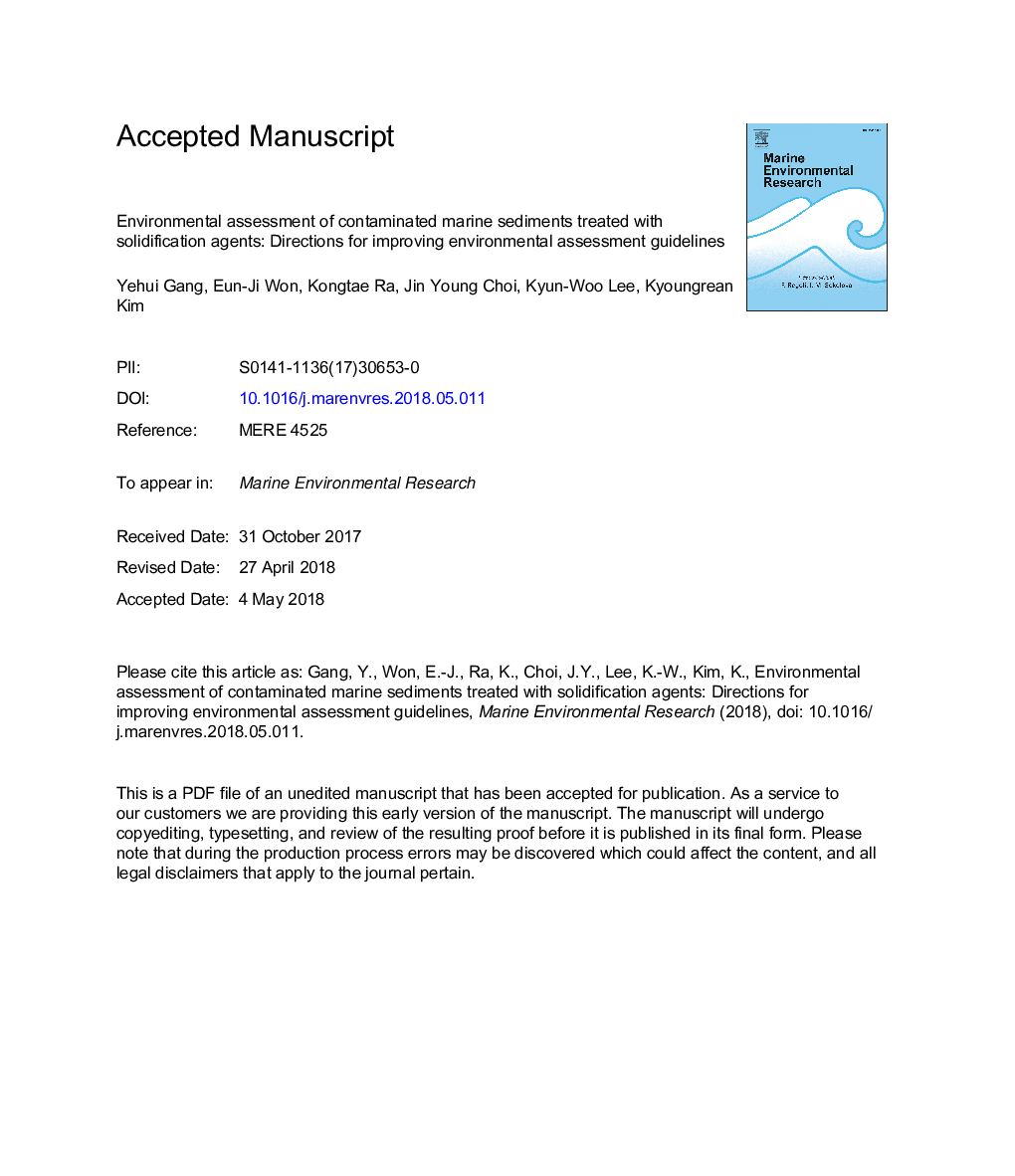| Article ID | Journal | Published Year | Pages | File Type |
|---|---|---|---|---|
| 8886255 | Marine Environmental Research | 2018 | 30 Pages |
Abstract
Treatment of dredged materials is a critical issue, since management and disposal of these products requires considerable investment of monetary resources, time, and space. The high concentration of pollutants in dredged materials, along with high water content and many fine particles make recycling these materials particularly difficult. In order to solve this problem, solidification/stabilization has been considered as a potentially viable solution for recycling dredged marine sediments. However, there are currently no guidelines that address potential biological and environmental impacts. To evaluate the stability of treated materials and their biological impacts, dredged marine sediments, which were polluted with heavy metals, were treated by solidification/stabilization using two different solidifying agents. To assess potential impacts, toxicity characteristic leaching procedures (TCLP, USEPA) and a bioassay (with the rotifer, Brachionus sp.) were performed with treated materials. In a TCLP test, we found that treatment with a solidification agent decreased the leaching concentration of heavy metals from sediment compared to the control. The rotifer bioassay showed no change in the survival rate during 24â¯h of exposure to both agents. However, survival differed between the two agents after 48â¯h of exposure. Screening physiological status using gene expression, showed that oxidative stress genes were significantly altered. These results suggest that more studies are needed to provide guidelines for deciding the usability of treated materials created by the solidification or stabilization of dredged materials.
Related Topics
Physical Sciences and Engineering
Earth and Planetary Sciences
Oceanography
Authors
Yehui Gang, Eun-Ji Won, Kongtae Ra, Jin Young Choi, Kyun-Woo Lee, Kyoungrean Kim,
